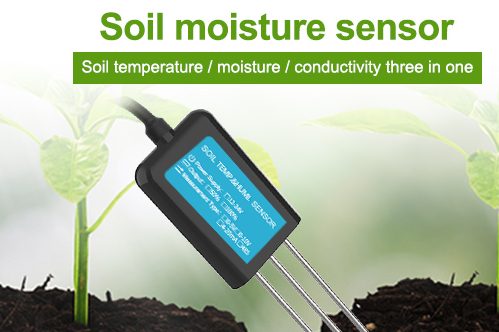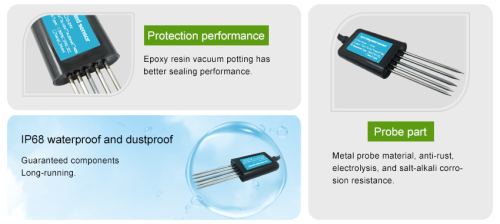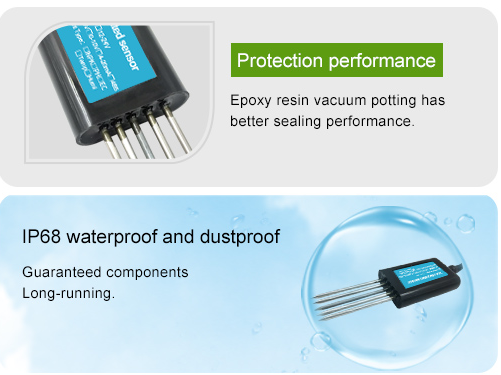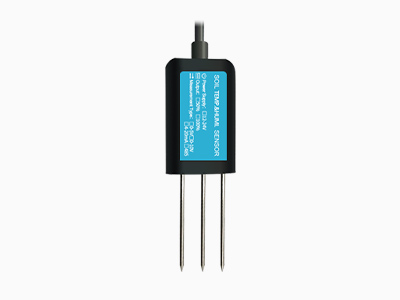Soil moisture probe have emerged as valuable tools for accurately measuring soil moisture content at various depths and locations. Soil moisture probes have emerged as valuable tools for accurately measuring soil moisture content at various depths and locations. This paper provides a comprehensive review of soil moisture probes, their applications, working principles, advantages, and considerations for effective utilization.

Applications of Soil Moisture Probe
Soil moisture probe find applications in diverse fields, including agriculture, horticulture, environmental science, and geotechnical engineering. In agriculture, these probes are used to optimize irrigation scheduling, prevent overwatering or underwatering, and enhance crop productivity. By providing real-time data on soil moisture levels, farmers can make informed decisions regarding the timing and amount of irrigation, leading to water conservation and improved crop yields.
In environmental science, soil moisture probes are employed to monitor soil moisture dynamics in natural ecosystems, such as forests, wetlands, and grasslands. Understanding soil moisture variations in these environments is crucial for assessing habitat suitability, predicting wildfire risk, and studying the impacts of climate change on vegetation.
In geotechnical engineering, soil moisture probes play a vital role in assessing the stability of slopes, embankments, and construction sites. By monitoring soil moisture content, engineers can evaluate the potential for landslides, foundation settlement, and soil compaction, thereby ensuring the safety and integrity of infrastructure projects.
Working Principles of Soil Moisture Probe
Soil moisture probes operate based on various sensing technologies, including capacitance, time-domain reflectometry (TDR), and frequency-domain reflectometry (FDR). Capacitance-based probes measure soil moisture by assessing the dielectric constant of the soil, which is influenced by its moisture content. As the soil moisture changes, the capacitance of the probe’s sensing elements also changes, allowing for the accurate determination of soil moisture levels.

TDR-based probes utilize electromagnetic pulses to measure the travel time of the pulses through the soil, which is directly related to the soil’s dielectric permittivity and moisture content. By analyzing the reflected signals, TDR probes can provide precise measurements of soil moisture at different depths.
FDR probes operate on the principle of measuring the frequency-dependent electromagnetic properties of the soil. These probes emit electromagnetic waves at various frequencies and analyze the soil’s response to determine its moisture content.
Advantages of Soil Moisture Probe
Soil moisture probes offer several advantages, making them indispensable for soil moisture monitoring and management. Firstly, these probes provide real-time and continuous measurements of soil moisture, enabling proactive decision-making and efficient water resource management. By obtaining accurate and timely data, users can optimize irrigation practices, conserve water, and mitigate the impacts of drought conditions.

Secondly, soil moisture probes offer spatial variability assessment, allowing users to understand the heterogeneity of soil moisture within a given area. This capability is essential for precision agriculture, where different soil moisture zones can be identified and managed separately, leading to improved resource utilization and crop performance.
Thirdly, soil moisture probes contribute to data-driven decision-making, enabling users to integrate soil moisture information with other environmental parameters, such as temperature, rainfall, and plant water uptake. This holistic approach facilitates comprehensive analysis and informed actions to maximize agricultural productivity and environmental sustainability.
Considerations for Effective Utilization of Soil Moisture Probes
To maximize the benefits of soil moisture probes, several considerations should be taken into account when deploying and using these devices. Firstly, proper probe installation is crucial to ensure accurate measurements. Probes should be positioned at representative locations within the target area, considering factors such as soil type, topography, and vegetation cover.
Secondly, calibration of soil moisture probes is essential to establish accurate relationships between the probe’s output and actual soil moisture content. Regular calibration against gravimetric measurements or other reference methods is necessary to maintain measurement accuracy over time.
Thirdly, data management and interpretation are critical aspects of utilizing soil moisture probes effectively. Users should have access to user-friendly software or data logging systems that facilitate data visualization, analysis, and integration with decision support tools. Additionally, the interpretation of soil moisture data should consider the specific
